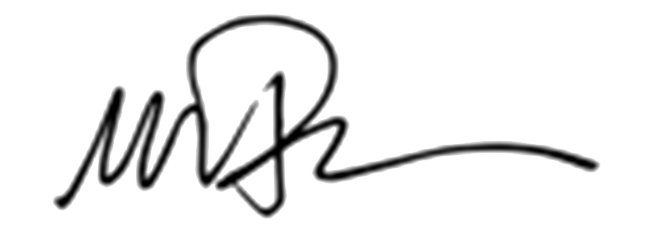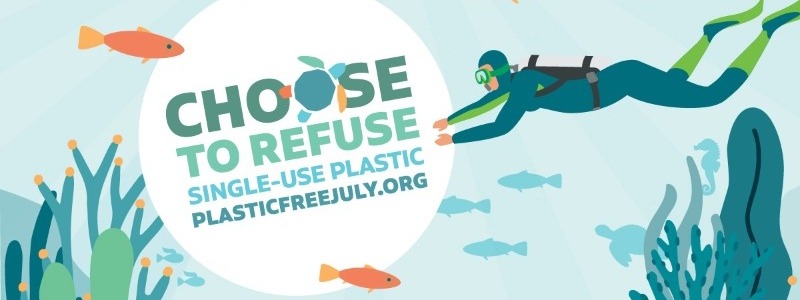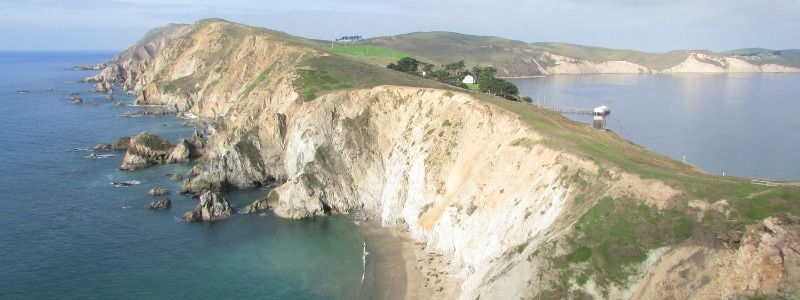| | Dear Friend, Summer has arrived, albeit a different type of summer than we have been accustomed to, as our communities continue to social distance and support each other during these complicated times. The EAC team continues to work remotely, though we are establishing some office hours for our team if needed. Unfortunately, our office is closed to the public and our membership at this time. We continue to monitor the guidance from Marin County Health and Human Services, California Health and Human Services, and the Centers for Disease Control and Prevention. I am happy to report we held our first ever online Annual Member Meeting. Gathering & Happy Hour on June 25th. Normally, we gather together in Point Reyes at the Dance Palace to share a meal, hear updates on our work, elect our board of directors, recognize individuals in our community for their work as volunteers, and give out our Peter Behr Steward of the Land and volunteer awards. We modified the night to provide an update on the State of EAC; Bridger Mitchell, EAC’s Board President, shared updates on our board election mailed ballots (please return by July 17th!); and we heard from our Conservation Director and Development Director before we closed the night with some West Marin and EAC trivia. We did not present awards to our volunteers or recognize our Peter Behr Steward of the Land this year, as we want to do that in person. We are hopeful that next year we will be able to gather together safely. Overall, the night left me missing our community. Prior to COVID-19, we were so fortunate to have our door open for members, volunteers, and board visits to talk about specific issues and just to check in and say hello. The staff and board is looking forward to a future where we will be able to gather together again. I personally want to thank all our donors for your continued support in 2020. Our work is just as busy as ever and we are working to adapt to new schedules and learning new ways to deliver our mission and manage our volunteer programs. Our work is made possible by people like you, and as we approach our 50th anniversary in 2021, our strong foundation of supporters will be needed more than ever. Thank you for your generosity, time and commitment to protecting and sustaining the unique lands, waters and biodiversity of West Marin through our advocacy, education and engagement programs. In good health, |
|  | Morgan Patton | Executive Director |
| | |  | | Our waters advocacy work is focused on the coastal region of Marin County, affectionately known as West Marin (Dillon to Muir beaches). Since 1971, EAC has been actively bringing people, science and policy together to champion innovative solutions for local environmental problems and threats to this system. Our programs specifically focus on Tomales Bay and Bolinas Lagoon watersheds, where we take action on coastal protection policy work and climate change planning efforts through submitting comments, testifying, community engagement, and participating in stakeholder groups. Below is a snapshot of our active work. Learn more about these programs and our past efforts online. |
| |
|
| Water Quality | EAC Kicks Off Water Quality Testing Point Reyes National Seashore Beaches We are excited to announce a partnership with Marin County Environmental Health Service's Ocean and Bay Water Quality Protection Program, Surfrider Marin, and Point Reyes National Seashore to collect water quality samples at three recreational beach sites. We initiated this program after reviewing the 2018 and 2019 Annual Beach Report Card where we noticed three recreational beaches within Point Reyes National Seashore (Limantour Beach, Drakes Estero, and Drakes Beach) were not currently being sampled. Water quality testing at these sites will help to fill a critical gap in data along Point Reyes National Seashore beaches, and will help ensures safe recreational beaches in our public lands. We plan on beginning testing in August after a slight delay due to COVID-19. We will be collecting three samples at each site for Fecal Coliform, E. coli Coliform, and Enterococcus. The test results will be submitted to the County of Marin and published weekly. Join us in our efforts! We need donor support to help us raise $6,800 to run this program in 2020 by July 31st!!
Make a special tax deductible donation today to support this program! We had hoped to secure grant funding for this program; unfortunately, funding priorities have shifted since COVID-19. Any assistance you can provide, as a restricted gift outside your membership giving, to bring this program to life is greatly appreciated. Each testing site costs us $167 per site or $501 for all three locations per week. Our samples are collected once a week through October, then we will switch to a once a month collection until spring 2021. |
| | |  | | | | | |  | Marine Protected Areas | EAC Receives Ocean Protection Council Small Grant Award We are excited to announce that the Golden Gate Marine Protected Area (MPA) Collaborative received a funding award from the State of California's Marine Protected Area (MPA) Outreach and Education Small Grants Program with Shark Stewards / Earth Island Institute. Our Executive Director, Morgan Patton, serves as co-chair of the Golden Gate MPA Collaborative, and will be coordinating the development of a MPA Training Module for Awareness and Compliance that will be available to the general public and coastal docent programs throughout the state to learn more about California's Network of MPAs. This project compliments the online training the Golden Gate MPA Collaborative previously developed in partnership with EAC. The new series of online trainings will be completed in the summer of 2021. More information on the development of this project in the coming months. |
| |  |  | Beyond Polarization: Learning from the Unlikely Story of California’s Marine Protected Areas July 15, 2020 10:00 AM PST
Hosts: Steven Yaffee of the University of Michigan and Kaitilin Gaffney of the Resources Legacy Fund Register Here At a time when the United States is divided and positive collective action feels out of reach, the creation of California’s network of marine protected areas provides a story of hope and hard work. After a contentious ten-year collaborative public process, the establishment of a network of 124 protected areas was considered nothing short of miraculous, having navigated political and interest-based polarization, bureaucratic delays, evolving science, and historic financial difficulties. What lessons can be drawn from the experience? This webinar will report on the conclusions of a new Island Press book that analyzes the story. It will also explain how the protected areas designation process has influenced the implementation of the MPA network, and describe elements of the California experience that may be adapted elsewhere. |
| | | Farallon Islands, Greater Farallones National Marine Sanctuary House Mouse Eradication Plan There are two upcoming webinars sharing differing perspectives to help people become better informed regarding the Greater Farallones National Marine Sanctuary House Mouse Eradication Plan. These webinars are scheduled in advance of the Coastal Commission's consideration of a consistency determination for the South Farallon Islands Invasive House Mouse Eradication Project of the U.S. Fish and Wildlife Service (Service). The project is located in the Farallon Islands National Wildlife Refuge, located approximately 27 miles west of San Francisco. The ocean waters surrounding the Refuge are part of the Greater Farallones National Marine Sanctuary. The South Farallon Islands contain the largest seabird breeding colony in the contiguous United States, with approximately 300,000 to 350,000 birds of 13 species. The Service's plan was approved in March 2019 and they require a consistency determination from the Coastal Commission, which will likely take place in November 2020. |
| | Slow Poison: Killing Zone on Our Farallon Islands?
July 14, 2020 1:00 PM PST
Host: Save the Farallones Register Here
This free webinar will explain the threats posed by a controversial proposal by the U.S. Fish and Wildlife Service to use helicopters to disperse 1.5 tons of cereal bait laced with a powerful rodent poison, Brodifacoum, onto the Southeast Farallon Island off of San Francisco. The problem with second-generation anticoagulant bloodthinners like Brodifacoum is that they also poison everything that eats the dying mice, or eats the bait pellets, or eats a seabird that carries the poison to mainland beaches. Because of the poison, at least a thousand Western Gulls are expected to die, according to the Fish and Wildlife Service estimates. |
| | Farallon Islands Mouse Eradication Program
July 16, 2020 6:00 PM PST
Host: Marin Audubon Society Register Here
This free webinar hosted by Marin Audubon Society, will provide information about the U.S. Fish and Wildlife Service’s Plan to restore the ecosystem of this globally important wildlife refuge by removing the introduced house mice. Attend the webinar to hear how you can help restore this unique ecosystem. The program includes panelists: Gerry McChesney, Farallon Islands National Wildlife Refuge Manager, U.S. Fish and Wildlife Service; Winston Vickers, DVM, MPVM, University of California, Davis; Peter Warzybok, Farallones Program Leader, Point Blue Conservation Science; Roger Harris, Certified Wildlife Biologist, Oceanic Society; and Anna Weinstein, Ocean Resources Director, National Audubon Society, as moderator. |
| | | | |  | EAC is a local grassroots non-profit based in Marin, California, along the coastal region known as West Marin.
We work to protect and sustain the unique lands, waters, and biodiversity of West Marin.
We achieve this goal through environmental advocacy, education and engagement opportunities.
Our work strives to provide long-term protection and conservation of the unique ecosystems and rural communities of West Marin,
and serves as a foundation of environmental protection for future generations.
Our work is made possible by individual contributions, with more than 75% of our funding coming from individuals.
Check out our website to learn more about how to become a contributing member,
or how you can give through stocks, donor-advised funds, and more. |
| | Contact Us Environmental Action Committee of West Marin (EAC)
65 Third Street Suite #14 | PO Box 609
Point Reyes Station, CA 94956
(415) 663.9312 | info@eacmarin.org
www.eacmarin.org | www.pointreyesbirdingfestival.org |
| |
|
| |
|
|